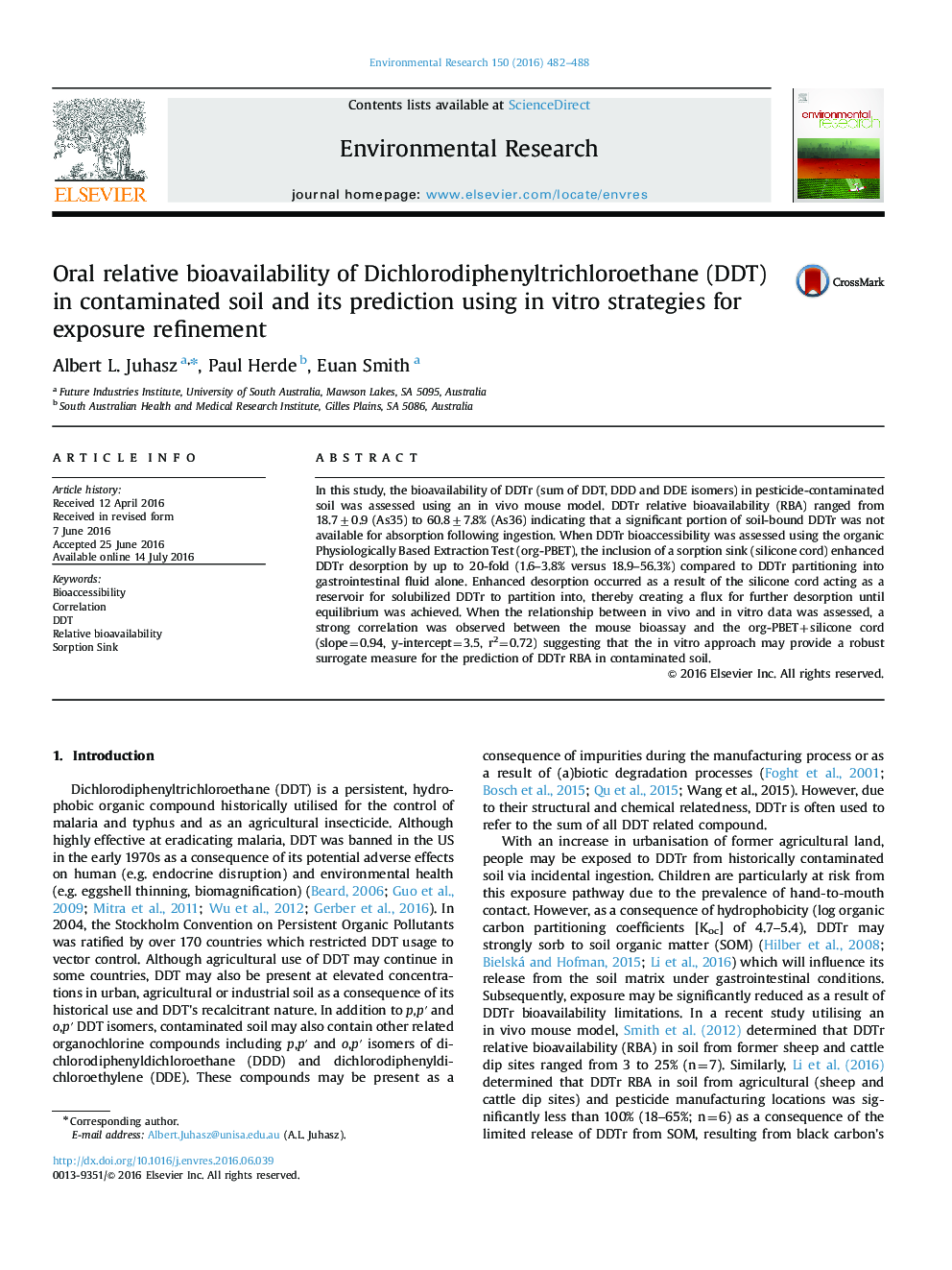| Article ID | Journal | Published Year | Pages | File Type |
|---|---|---|---|---|
| 6351041 | Environmental Research | 2016 | 7 Pages |
Abstract
In this study, the bioavailability of DDTr (sum of DDT, DDD and DDE isomers) in pesticide-contaminated soil was assessed using an in vivo mouse model. DDTr relative bioavailability (RBA) ranged from 18.7±0.9 (As35) to 60.8±7.8% (As36) indicating that a significant portion of soil-bound DDTr was not available for absorption following ingestion. When DDTr bioaccessibility was assessed using the organic Physiologically Based Extraction Test (org-PBET), the inclusion of a sorption sink (silicone cord) enhanced DDTr desorption by up to 20-fold (1.6-3.8% versus 18.9-56.3%) compared to DDTr partitioning into gastrointestinal fluid alone. Enhanced desorption occurred as a result of the silicone cord acting as a reservoir for solubilized DDTr to partition into, thereby creating a flux for further desorption until equilibrium was achieved. When the relationship between in vivo and in vitro data was assessed, a strong correlation was observed between the mouse bioassay and the org-PBET+silicone cord (slope=0.94, y-intercept=3.5, r2=0.72) suggesting that the in vitro approach may provide a robust surrogate measure for the prediction of DDTr RBA in contaminated soil.
Related Topics
Life Sciences
Environmental Science
Health, Toxicology and Mutagenesis
Authors
Albert L. Juhasz, Paul Herde, Euan Smith,
